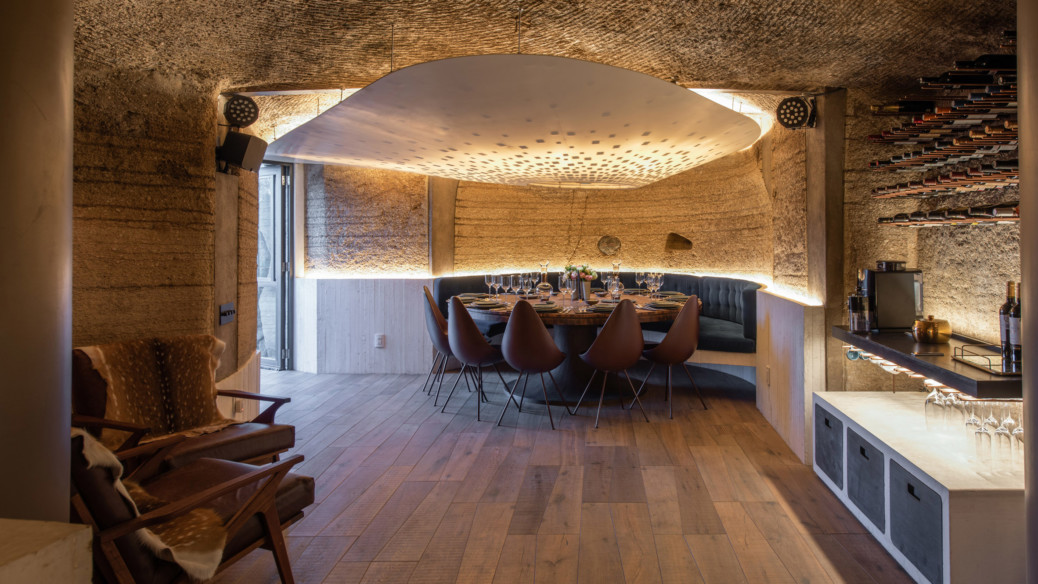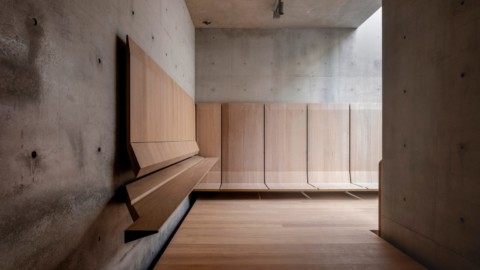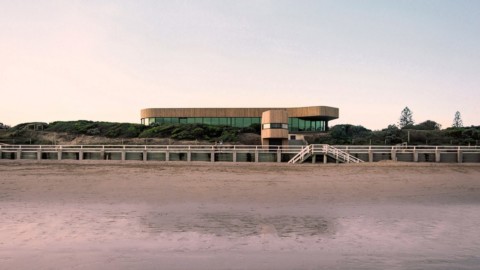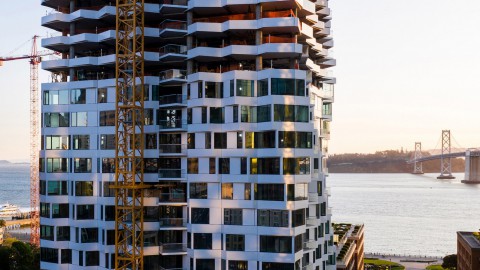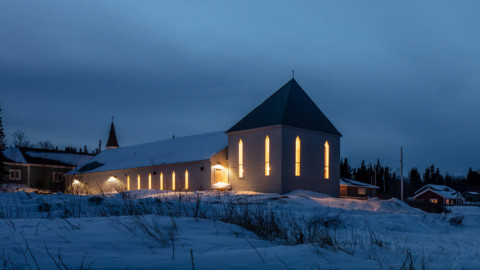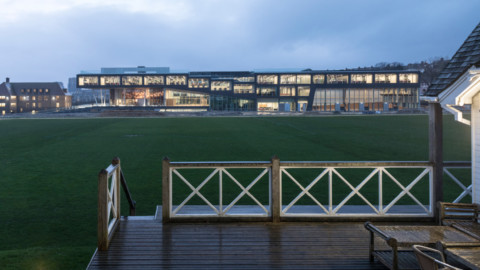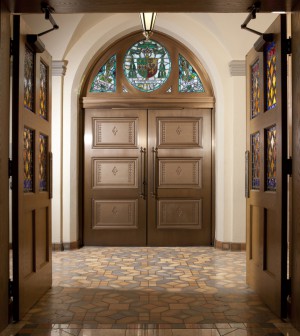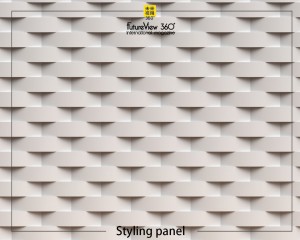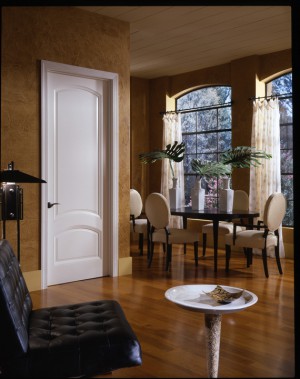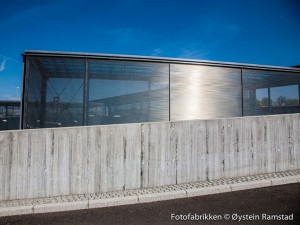Rugged walls, domed ceilings and reflective surfaces feature in this underground lair that was designed by Mexican studio Amezcua for an existing 1960s residence on a hill.
該地下巢穴採用堅固的牆壁,圓頂天花板和反光錶面,該地下巢穴是由墨西哥工作室Amezcua設計的,用於1960年代現有的山上住宅。
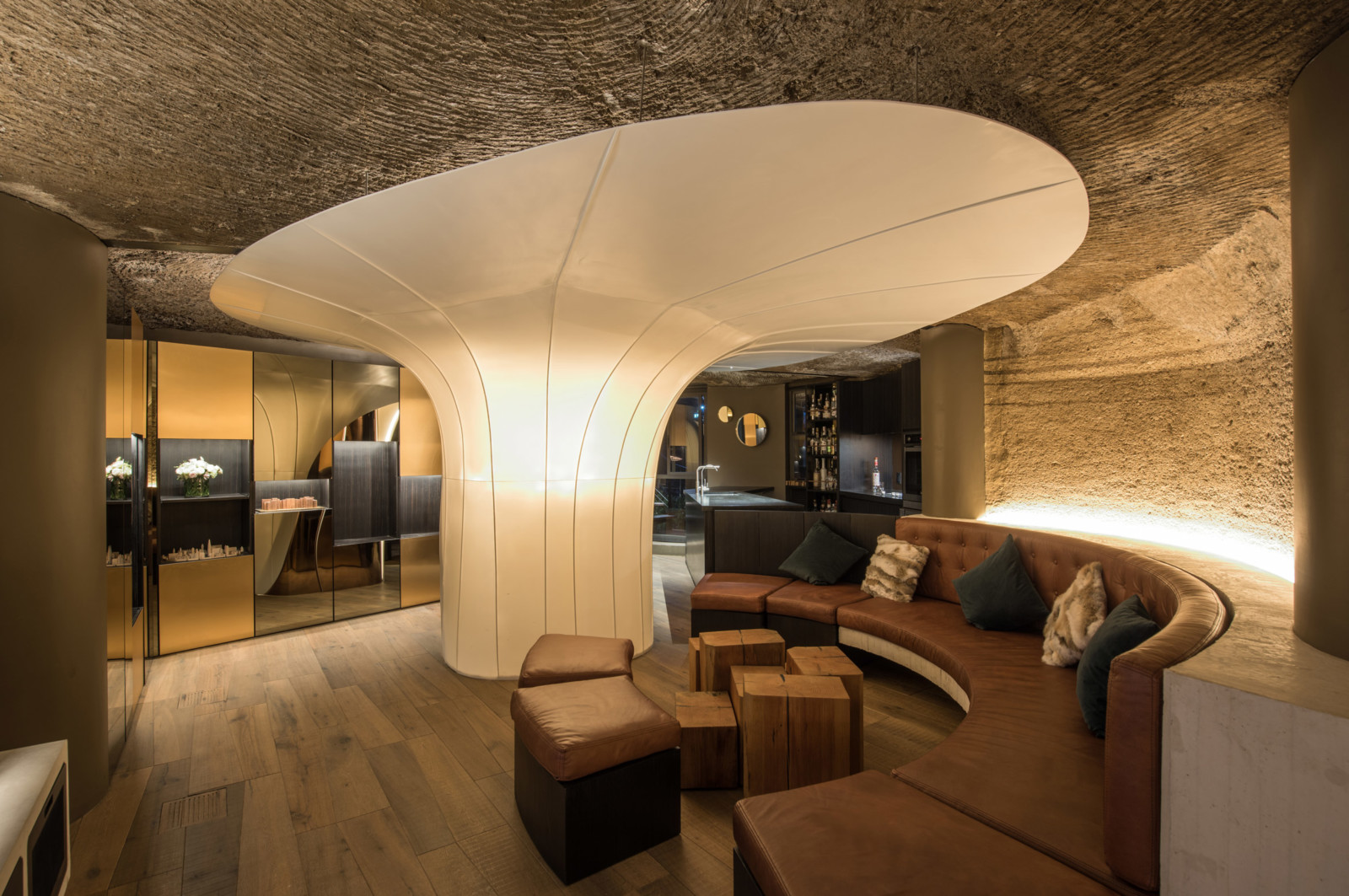
The project, called Photocatalytic Cave, was built under a house just west of Mexico City, in a hilly area where it is common to find caves dug for the extraction of sand. The home belongs to a co-owner of the real estate company MM, who desired an underground space where he could host parties or spend time alone.
Local studio Amezcua set out to create a “habitable, enduring and mutable” space that worked in concert with the client’s above-ground residence.
The house was designed a half-century ago by postmodern architect Manuel Rocha Díaz in collaboration with his client, sculptor Ernesto Paulsen. The residence features a large, convex ceiling that is lined with thousands of pieces of oak.
該項目名為“光催化洞穴”(Photocatalytic Cave),建在墨西哥城西邊的一棟房子下,該房子位於丘陵地區,在那裡經常會發現挖沙的洞穴以提取沙子。 該房屋屬於房地產公司MM的共同所有人,後者希望擁有一個地下空間,他可以用來舉辦聚會或獨自消磨時間。
當地的工作室Amezcua著手創建一個“可居住,持久且易變”的空間,與客戶的地面住所協同工作。
這所房子是半個世紀前由後現代建築師Manuel RochaDíaz與他的客戶雕塑家Ernesto Paulsen合作設計的。 該住所設有凸出的大型天花板,內襯數千塊橡木。
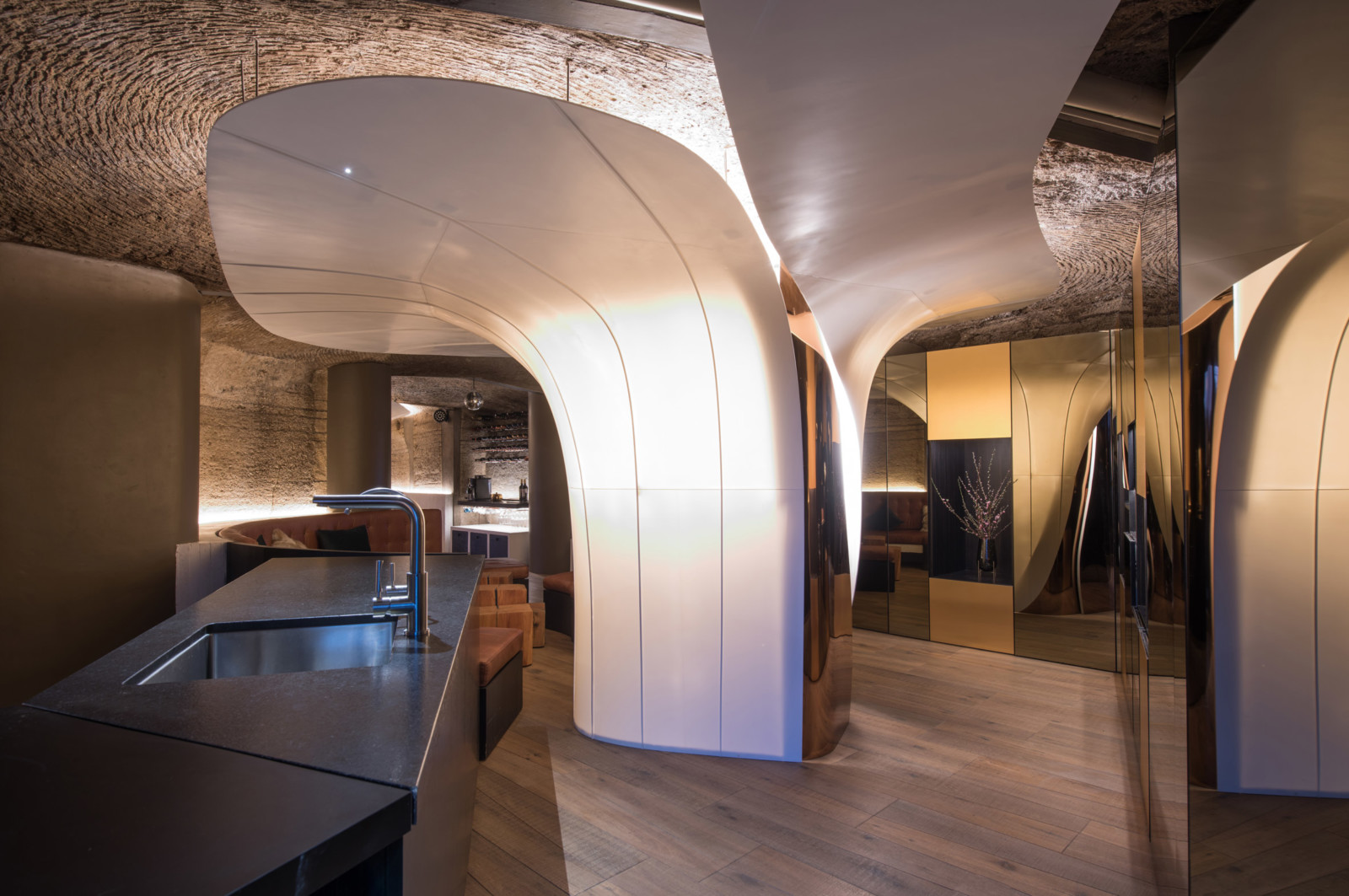
For the design of the subterranean space, Amezcua drew upon the home’s vocabulary, along with the upscale apartments built by MM in Mexico City. The architects also considered the use of caves by early humans.
“It is there, in the cave, where we find the first refuge of man in history, characterised by being a place with very little light, limited ventilation and high humidity,” the team said in a project description. “At the same time, it was a safe place – a naturally fortified refuge where a man can isolate himself from the world, be protected from the weather and socialise in tranquility.”
對於地下空間的設計,Amezcua借鑒了房屋的詞彙,以及MM在墨西哥城建造的高檔公寓。 建築師還考慮了早期人類對洞穴的使用。
該小組在項目說明中說:“在洞穴裡,我們發現了歷史上第一個人類的避難所,其特點是光線很少,通風受限和濕度高的地方。” “與此同時,這是一個安全的地方–一個自然堅固的避難所,人們可以在這個避難所中與世隔絕,免受天氣影響並在寧靜中交往。”
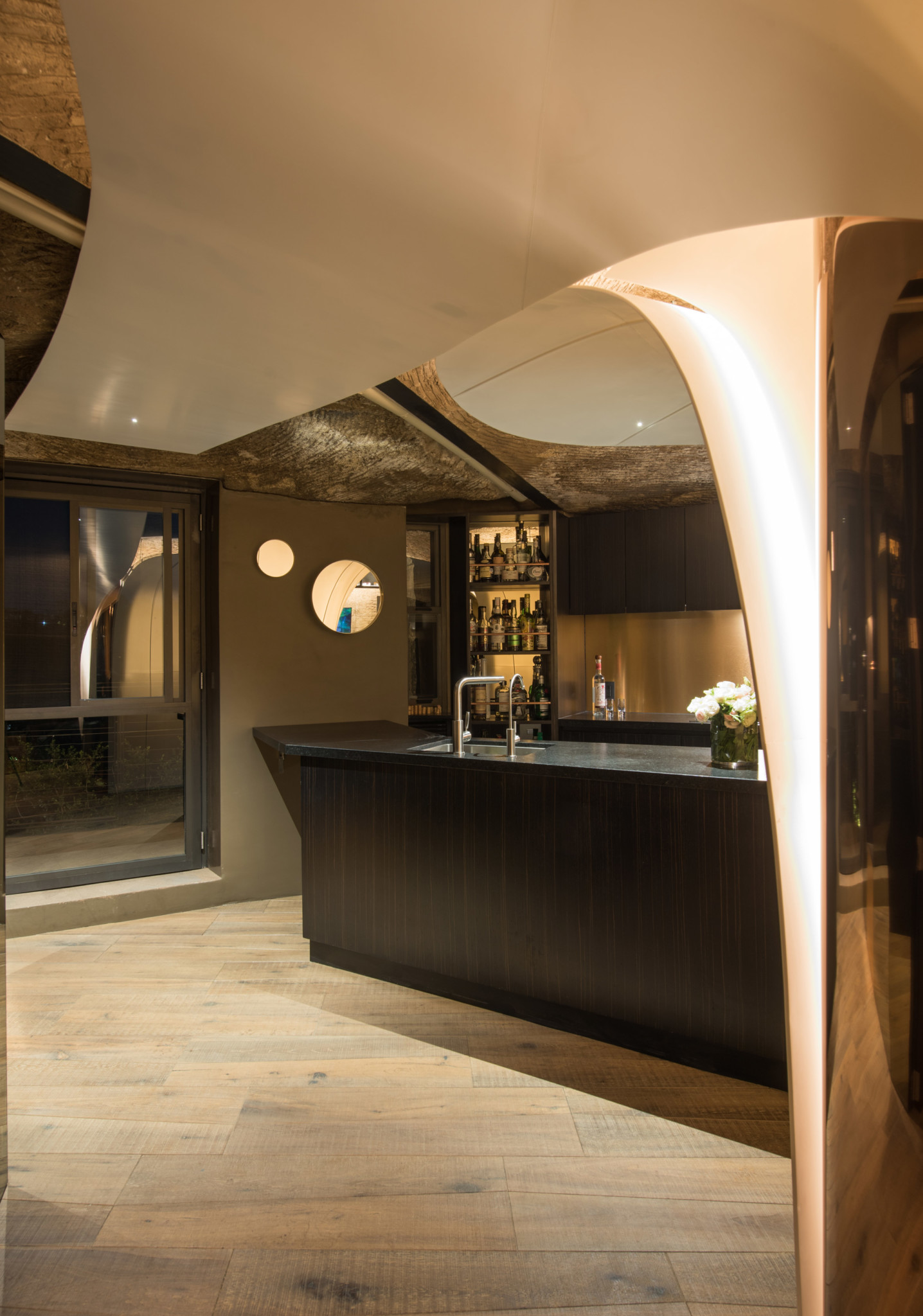
Encompassing 70 square metres, the addition comprises five chambers, each with a distinct function. One chamber contains a kitchen and bar, while an adjacent room houses the living room and a media area.
A third chamber encompasses a dining area and access to a balcony, and a fourth contains wine storage and space for smoking and sipping coffee. The final chamber houses a bathroom and is concealed behind a mirrored door in the kitchen.
佔地70平方米,包括五個腔室,每個腔室具有獨特的功能。 一個房間包含一個廚房和酒吧,而相鄰的房間則容納起居室和一個媒體區域。
第三個房間包含一個用餐區並通往陽台,第四個房間包含葡萄酒儲存空間以及可吸煙和飲咖啡的空間。 最後一個房間設有一間浴室,並隱藏在廚房的鏡門後面。
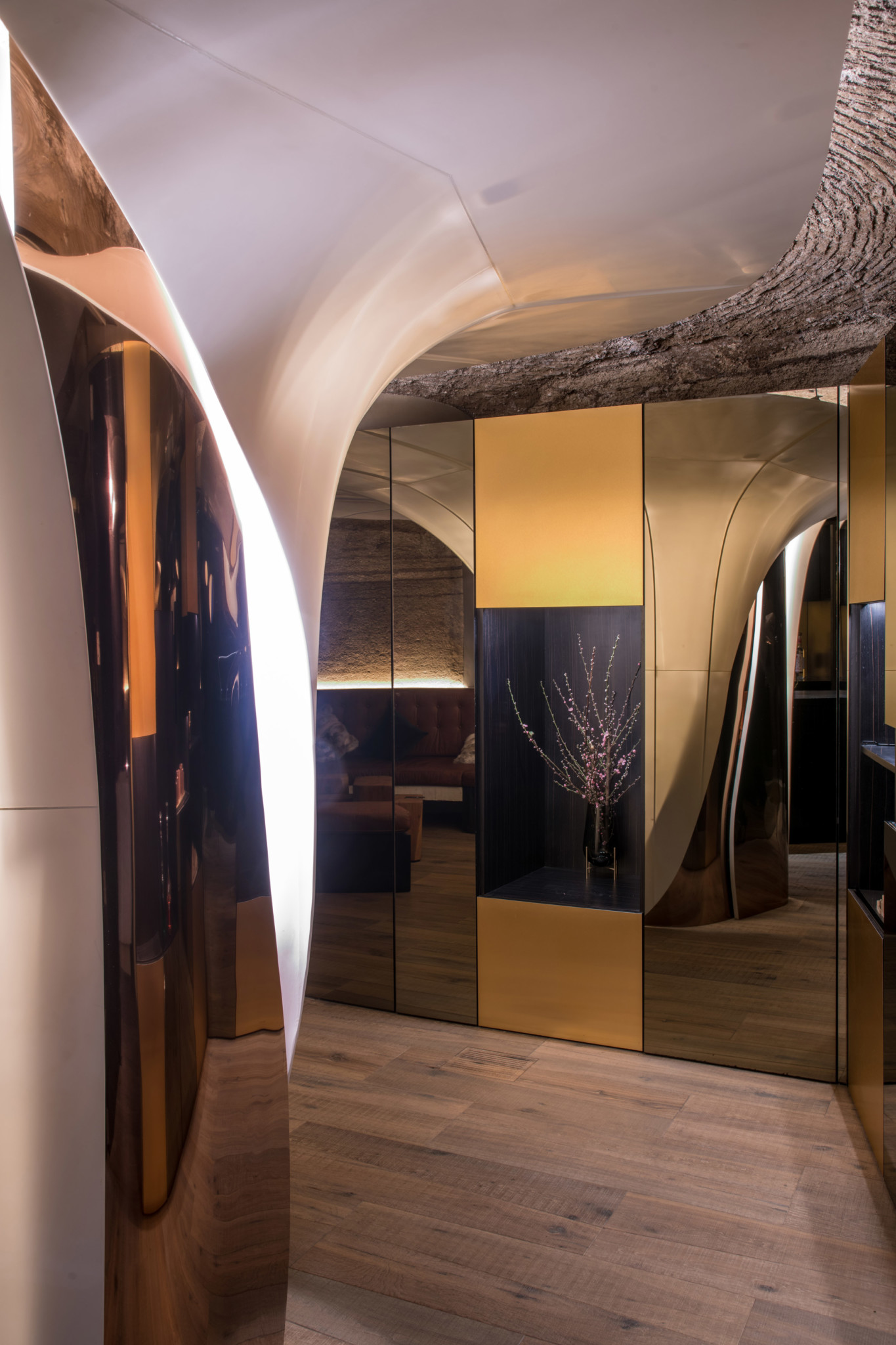
The project involved several key steps. During the first step, which concerned the structural system, the team installed metal lintels – similar to those used in coal mines – and supporting columns. The second step involved carving the roofs and forming the domed ceilings, which transfer the structural load to perimeter walls.
The third step addressed the potential for bacteria and fungi to form due to the presence of humidity and limestone. In response, the team used passive strategies, such as anti-corrosive materials and natural air circulation, while also incorporating “active” equipment such as air injectors, dehumidifiers and heaters.
該項目涉及幾個關鍵步驟。 在涉及結構系統的第一步中,團隊安裝了金屬石(類似於煤礦中使用的石)和支柱。 第二步涉及雕刻屋頂並形成圓頂天花板,將結構載荷轉移到週牆。
第三步解決了由於濕氣和石灰石的存在而形成細菌和真菌的可能性。 作為回應,該團隊採用了被動策略,例如防腐蝕材料和自然空氣流通,同時還採用了“主動”設備,例如空氣噴射器,除濕機和加熱器。
The space has a fluid layout and a mix of raw and sleek finishes. Carved limestone walls are paired with wooden flooring, glossy surfaces and dark and light cabinetry. Rooms are fitted with contemporary furnishings that can accommodate spaces with irregular dimensions.
In the living area, the team placed a curved, leather sofa that follows the shape of the wall, along with wooden blocks that serve as support tables or movable benches. In the kitchen, the team installed cabinetry made of wood, copper and mirrors.
該空間佈局流暢,混合了原始和光滑的外觀。 雕刻的石灰石牆與木地板,光滑的表面以及深色和淺色的櫥櫃配對。 客房配有現代家具,可容納不規則尺寸的空間。
在起居區,團隊放置了一個彎曲的皮革沙發,該沙發遵循牆壁的形狀,並配有用作支撐桌或活動長凳的木塊。 在廚房中,團隊安裝了由木材,銅和鏡子製成的櫥櫃。
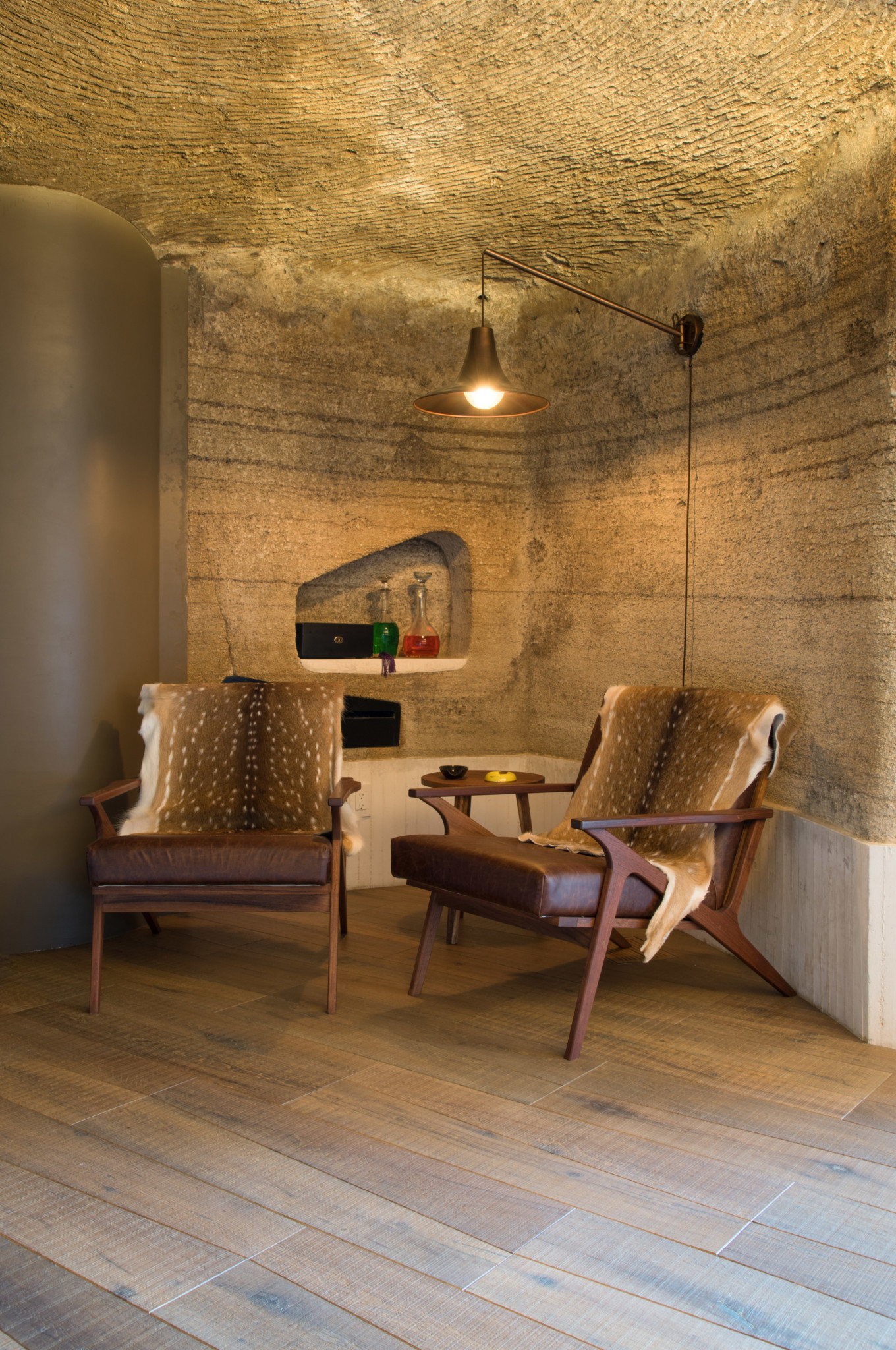
At the heart of the addition is the living room and kitchen, which are separated by a partition shaped like a calla lily flower. The sculptural partition is wrapped in white panels of Krion – a composite material with photocatalytic properties that can help diffuse light and purify the air, according to the firm.
The same material was used to create a glowing installation that hangs over the dining room table. In addition to illuminating the space, the piece “emulates the effect of an x-ray, exhibiting a series of blocks placed by the owner – each carrying a written intention”. The installation was created with artist Emilio García Plascencia.
附加的核心是起居室和廚房,它們之間被一個形狀像馬蹄蓮花的隔板隔開。 據該公司稱,雕刻隔板被包裹在Krion的白色面板中。Krion是一種具有光催化特性的複合材料,可以幫助散射光線並淨化空氣。
使用相同的材料來製作懸掛在餐桌上的發光裝置。 除了照亮空間外,這件作品還“模仿了X射線的效果,展示了主人擺放的一系列積木,每個積木都帶有書面意圖”。 該裝置是由藝術家EmilioGarcíaPlascencia創作的。
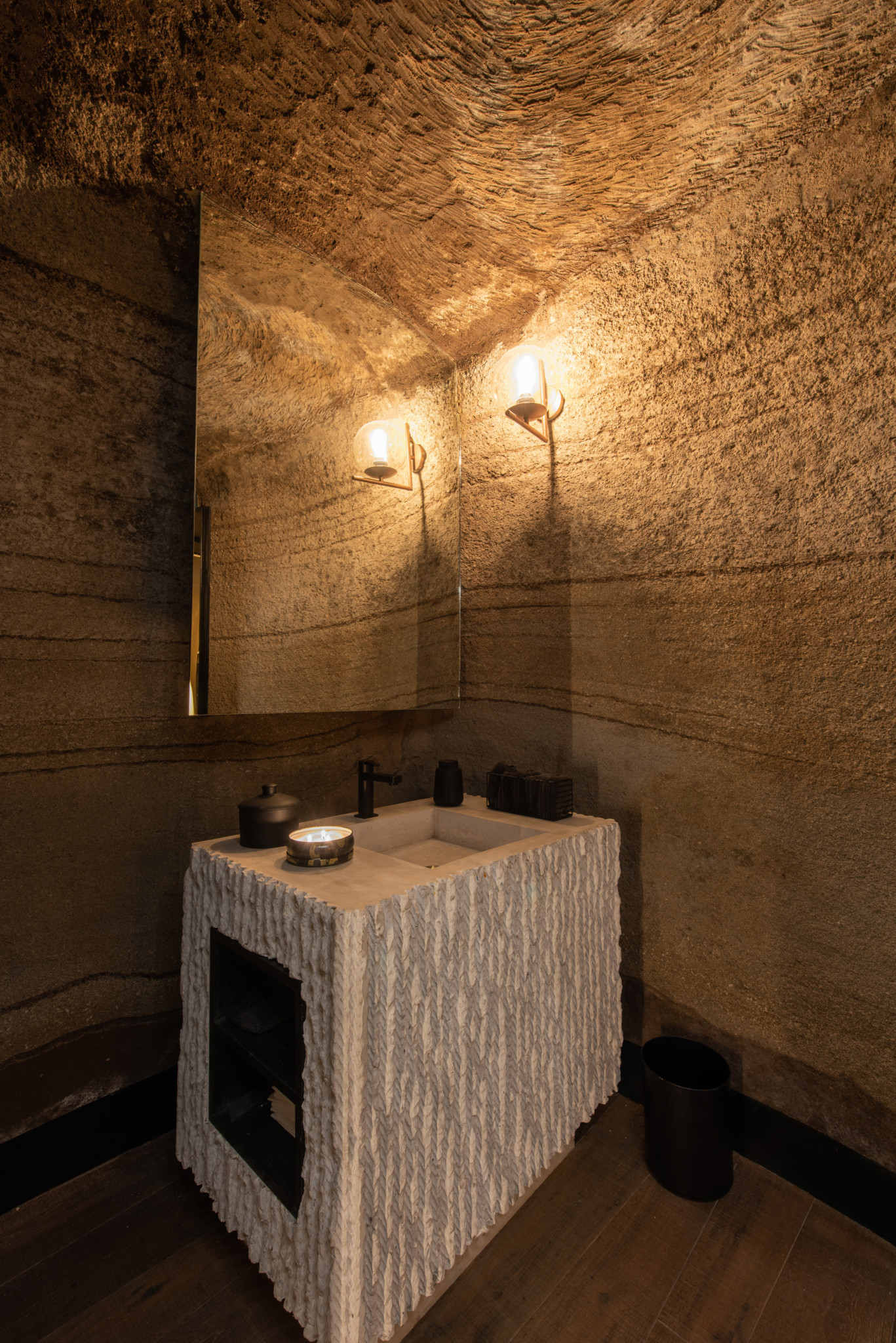
The architects worked with another artist – Rodolfo Díaz Cervantes of Taller Tornel – to create the washbasin in the bathroom. Constructed onsite using marbled concrete, the piece has a textural surface that references geological layers.
Revealing the cave’s evolution over time was one of the project’s primary goals.
建築師與另一位藝術家Taller Tornel的RodolfoDíazCervantes合作,在浴室中創建了洗臉盆。 該產品使用大理石混凝土在現場建造,其表面具有參照地質層的紋理。
揭示洞穴隨時間的演變是該項目的主要目標之一。
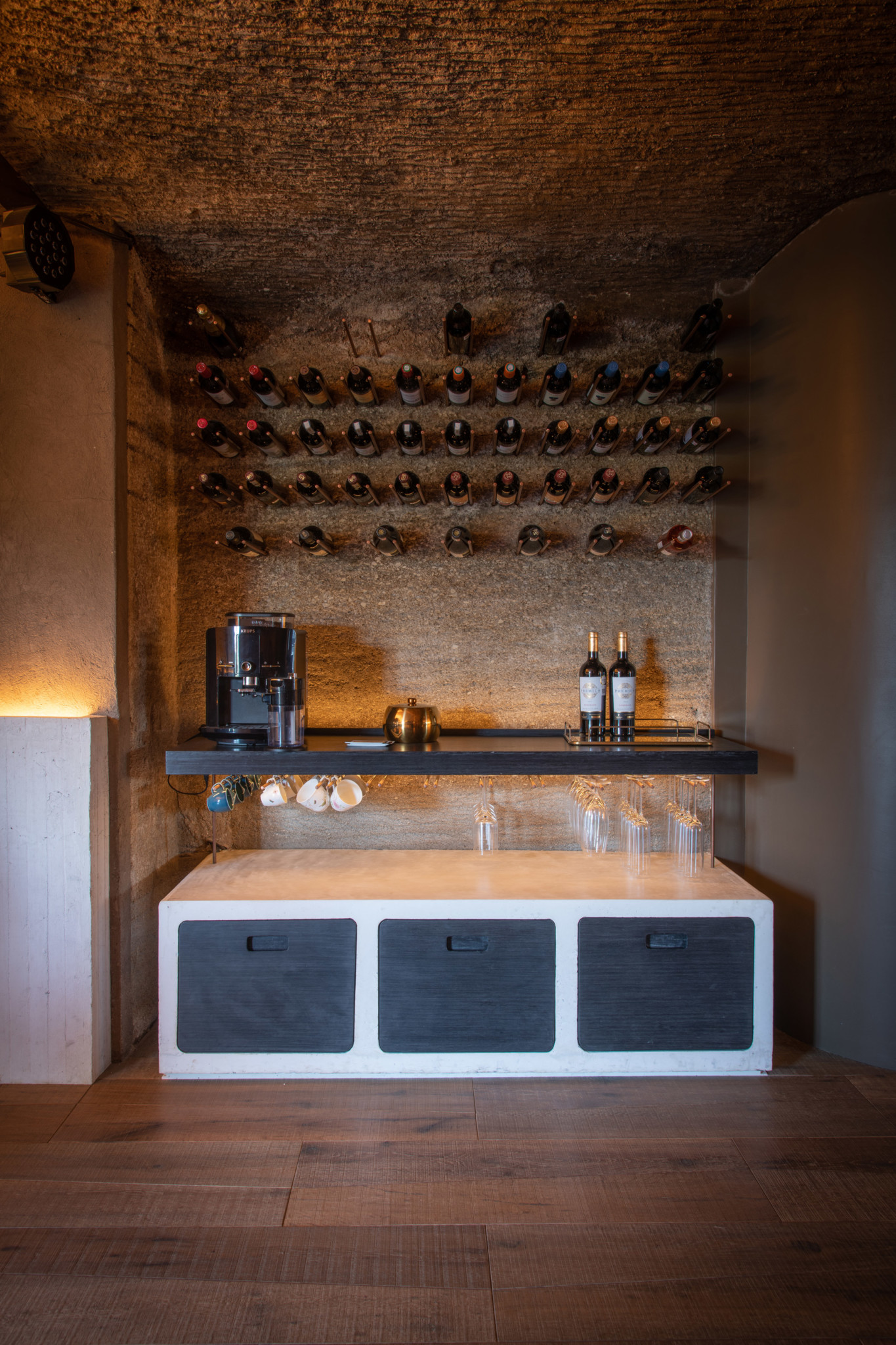
“Its beauty is in its nature and the reading of time observed in the strata of its walls,” the architects said. “It is a space that awakens the intuition and the most primitive desires of men.”
Other subterranean spaces include a Manhattan espresso bar by Only If Architecture that features metallic paint and black rubber, and a cave-like art gallery by Open Architecture that is carved into a sand dune in Qinhuangdao, China.
建築師說:“它的美在於它的本質,在牆壁的地層中可以看到時間的讀數。” “這是一個喚醒人們的直覺和最原始的慾望的空間。”
其他地下空間包括Only If Architecture提供的具有金屬漆和黑色橡膠的曼哈頓特濃咖啡吧,以及中國秦皇島雕刻成沙丘的Open Architecture提供的類似洞穴的美術館。
Project credits:
Architect: Amezcua
Design team: Gabriela Mosqueda, Aarón Rivera, Rodrigo Lugo, Miguel González, Saraí Cházaro, Víctor Cruz, María García, Mauricio Miranda, Julio Amezcua
Developer: MM Desarrollos
Solid surface interior lining: Krion K-Life by Porcelanosa
Thermoformed Krion-Life and installation coordination: Embodied
Interior lighting: Luz en Arquitectura
Outdoor lighting project and luminaires: Light Moxion
Pedestal and concrete sink in bathroom: Taller Tornel
Concrete furniture: JM Construcciones
Listone Giordano floor (supply and installation) and Mafi table: Forte/Soldesi
Entertainment system: Stylus Audio & Video
項目學分:
建築師:Amezcua
設計團隊:Gabriela Mosqueda,AarónRivera,Rodrigo Lugo,MiguelGonzález,SaraíCházaro,VíctorCruz,MaríaGarcía,Mauricio Miranda,Julio Amezcua
開發人員:MM Desarrollos
固體表面內襯:Porcelanosa的Krion K-Life
熱成型的Krion-壽命與安裝協調性:體現
室內照明:Luz en Arquitectura
戶外照明項目和燈具:Light Moxion
浴室基座和混凝土水槽:Taller Tornel
混凝土家具:JM Construcciones
Listone Giordano地板(供應和安裝)和Mafi桌子:Forte / Soldesi
娛樂系統:手寫筆音頻和視頻
FROM:https://www.dezeen.com/2020/01/14/amezcua-cave-subterranean-addition-mexico-city/

